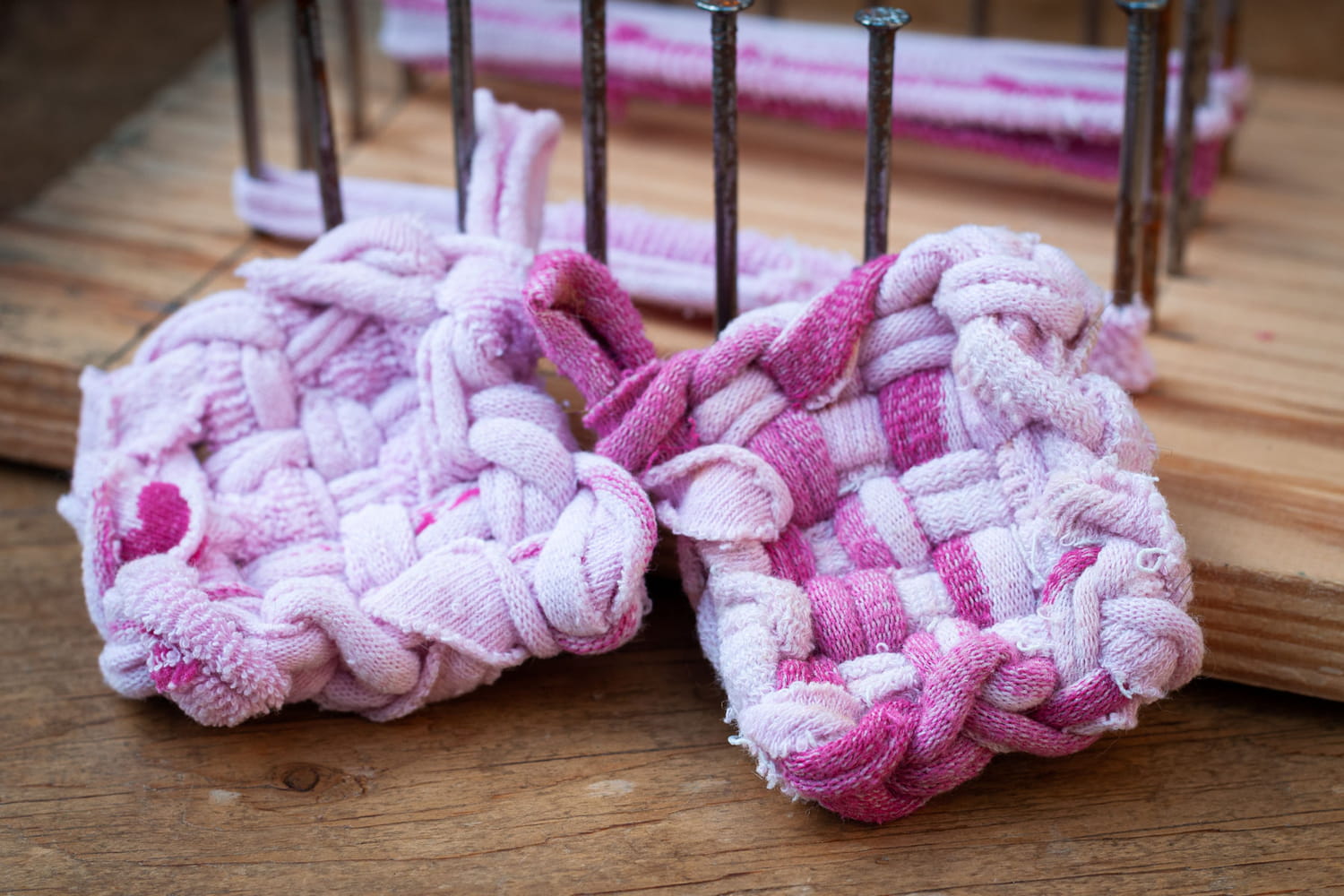Want to reduce your waste and adopt a more green household? Forget the disposable sponges and make your own Tawashis. With old socks or tights, here is an easy DIY to create a zero waste sponge.
We don’t always think about it, but industrial sponges, especially those in synthetic resin, pollute a lot. To limit their impact, an alternative from Japan exists: Tawashi, which means “washingat”. It is a zero waste sponge, made yourself with recovery fabrics, washable and reusable. Simple to do, it is used for dishes as well as for cleaning the house, replacing conventional sponges.
For Make your Tawashiyou will first have to be equipped with a small loom. If you don’t have them, know that it is very easy to make one. Just have a square wooden about fifteen centimeters and planting it 5 nails on the edges on each side By spacing them regularly (about 2 cm). Once your loom has been made, cut down rings of fabrics in an old tights, leggings, a sleeve or socks.
Another option? Bring a plastic or in Tupperware type glass of the desired size then place linen pins On the edge to replace the nails of the board. You will get an extra loom in the blink of an eye.
Once your loom has been made, cut down rings of fabrics in an old tights, leggings, a sleeve or socks. Then you just have to weave as follows:
- Put on the fabric rings on one side of the loom and its opposite side, the first at the top and the first at the bottom for example. You will get 5 vertical lines.
- Take another ring of fabric and place it on an unused side nail (for example the first on the right) then Pass the fabric over the first ring Installed in the first step, then below the second, above the third, below the fourth and finally above the last.
- Put on the tip of the ring on the highlight opposite to the one on which you started (left if you started right).
- Do the same with another fabric ring and the second side nail, taking care vigilantthat is to say by first passing the fabric below.
- Continue to weave with a fabric ring on each nail until they are all filled, always taking carereverse weaving Compared to the previous line.
- To finish the Tawashi, Fold the stitches By removing the fabric ring from a nail to slip it into the next fabric ring.
- Continue until the end and Use the last ring to hang.
Need help to visualize how to do your Tawashi? Here is an easy video tutorial from tissue strips:
What material for a Tawashi?
Wondering what is the best material to create a Tawashi sponge depending on the sponge you would like? For a Classic model Who will be useful for all surfaces, you can opt for any recovery fabric by preferably choosing part of a tube:
- A sticky,
- leggings,
- a used sock,
- a round of a sweater,
- a leg of pants,
- by Jean,
- A used t-shirt …
You can also cut a ball into a larger fabric (like the T-shirt) but you will then have to fix the end to the loom before unrolling the ball on the nails.
Note that you can also choose to create your Tawashi to knit or hook. You will then cut old textiles to create a ball or opt for a dense and resistant thread.
For a Gratounette -like tawashiwe can use a ball of sisal, linen or hemp. It is possible to make the Tawashi sponge entirely with this material or simply add the sisal to one side of the traditional tawashi. This type of material will be perfect for dishes or cleaning provided that the surface is not sensitive to scratches.
If you opt for a Bathing Tawashi to wash youconversely, prefer a soft textile that will not attach your skin.


